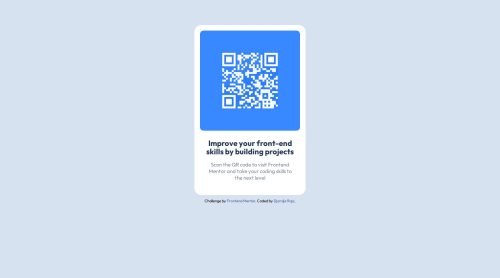QR Code component

Solution retrospective
This is my first time using Figma Design, so I had a few problems positioning the component in the center of the webpage. So I decided to use display flex and margin to place it in the center.
What challenges did you encounter, and how did you overcome them?I had a few problems of course but one problem that stuck out was with the image. I noticed that the image had a background with some circles but the Figma design didn't so I tried different ways to cut it out or mask it. I decided to use clip-path to cut the sides of the image just enough so you can see the whole QR code and then changed background color of container__image class to match QR code image color.
What specific areas of your project would you like help with?Is using a margin and display: flex to center a div element in HTML page best practice or is there something else I could have done? Is there any elegant solution to remove image background than clip-path?
Please log in to post a comment
Log in with GitHubCommunity feedback
- @llRedXll
Hi The solution looks great!
To center an element both vertically and horizontally using Flexbox, you can apply these styles to the container:
display: flex; justify-content: center; /* Horizontally centers the content */ align-items: center; /* Vertically centers the content */ height: 100vh; /* Optional: Makes the container take full viewport height */Steps to implement:
Wrap the element you want to center in a container (if it isn't already).
Apply the above CSS styles to the container.
Join our Discord community
Join thousands of Frontend Mentor community members taking the challenges, sharing resources, helping each other, and chatting about all things front-end!
Join our Discord